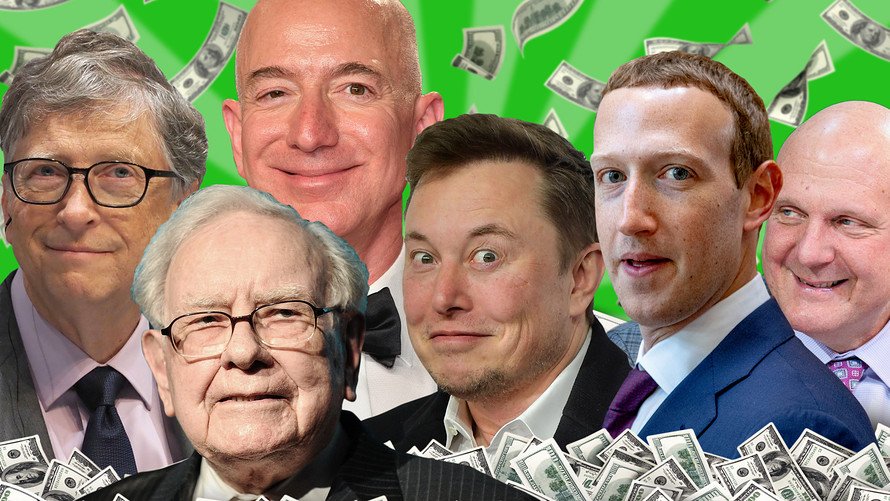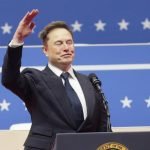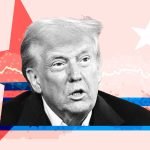
Leadership Unplugged: Understanding the Divide Between CEOs and Presidents.
Posted in :
CEOs focus on profits and quarterly results for shareholders, while national presidents must protect citizens’ welfare and democracy—showcasing why treating governance like corporate leadership threatens society’s foundations.
The stark contrasts between the role of a corporate CEO and a national president, emphasizing the unique responsibilities and implications associated with each position.
Imagine a world where the leader of a nation thinks like the CEO of a major corporation. Would roads be paved in profit margins? Public policies decided in board meetings? This notion sparked a thought-provoking debate about the vital differences between CEOs and presidents. In this article, we’ll peel back the layers on why leadership in these two realms is not just different — it’s a fundamental divide that shapes societies.
The Crux of Responsibility: Maximizing Profits vs. Serving Humanity
When examining the roles of CEOs and presidents, one must recognize the stark differences in their responsibilities. While both positions require leadership, their priorities diverge significantly. CEOs prioritize shareholder gains and profitability, whereas presidents focus on citizen rights and public welfare.
Responsibility: Profits vs. People
A CEO’s primary duty is clear: maximize shareholder value. Their decisions revolve around one central question: Does this decision maximize revenue? This focus on profit can lead to tough choices, often sidelining broader societal impacts.
In contrast, a president’s responsibility is to serve the entire nation. They must protect citizens’ rights and ensure public welfare. This often means making decisions that may not be profitable but are essential for the greater good. As an anonymous source aptly stated,
“In business, the bottom line is profit; in governance, the bottom line is people.”
Time Horizon: Short-Term vs. Long-Term Impact
CEOs are judged on quarterly results. If profits dip, they may find themselves out of a job within months. This short-term focus can lead to decisions that prioritize immediate gains over long-term sustainability.
Presidents, however, operate on a different timeline. Their decisions can shape the future for generations. Consider policies on healthcare or climate change. The effects of these choices may not be visible for decades. A president must ask, What will our nation look like for my grandchildren?
Power Structure: Boardroom vs. Democracy
CEOs answer to a board of directors, a small group representing investors. If they please this board, their position is secure. This creates a power dynamic that can prioritize profits over people.
On the other hand, a president answers to millions of citizens. Each citizen has unique hopes and fears. Their “board of directors” is the electorate, requiring negotiation and moral leadership. The question for a president is not just about pleasing a few but earning the trust of many.
Ethical Stakes: Financial vs. Human Lives
For a CEO, a bad decision might mean layoffs or financial losses. But for a president, the stakes are much higher. Poor policy decisions can lead to loss of life. Issues like war, healthcare, and disaster response are not just business decisions; they are matters of life and death.
Public Scrutiny: Private Earnings vs. Public Accountability
CEOs often operate behind closed doors. Many of their decisions remain confidential, shielded from public view. This allows for a level of privacy that can protect corporate interests.
In contrast, a president operates under relentless public scrutiny. Every decision, every speech, and every mistake is open to judgment. The need to earn public trust is constant and demanding.
In summary, the roles of CEOs and presidents are fundamentally different. While CEOs focus on profit and quarterly results for a limited group, presidents must govern for the welfare of entire populations. The consequences of treating the presidency like a corporate job can be dire, impacting lives, values, and the future of a nation.
Navigating Time Horizons: Quarterly vs. Generational Decision Making
In the world of leadership, the time frame for decision-making can vary dramatically. On one hand, we have CEOs, who operate on a quarterly evaluation cycle. On the other, presidents make choices that can have long-term consequences for entire nations. This difference in timelines shapes the very fabric of their leadership styles.
The Quarterly Cycle of CEOs
CEOs are under constant pressure to deliver results. Every three months, they face scrutiny from their boards and investors. If profits dip, they risk losing their jobs. This creates a culture of urgency. Decisions are often made with a focus on immediate outcomes.
- Question: What will earnings look like this quarter?
- Focus: Maximizing shareholder value.
In this environment, the pace is fast. CEOs must think quickly and act decisively. They often prioritize short-term gains over long-term sustainability. This can lead to decisions that may not benefit the company in the long run.
The Generational Impact of Presidents
In stark contrast, presidents operate on a much broader timeline. Their decisions can shape the future for decades. Policies on healthcare, education, and climate change are not just about today; they are about tomorrow and beyond.
- Question: What will our nation look like for my grandchildren?
- Focus: Upholding human dignity and public welfare.
Presidents must consider the long-term effects of their actions. They often face challenges that require patience and foresight. As one quote aptly puts it,
“Long-term visions require patience; short-term goals require urgency.” – unknown
This highlights the delicate balance they must maintain.
The Ethical Stakes
The stakes are also different. For a CEO, a poor decision might mean layoffs or financial losses. But for a president, a misstep can lead to loss of life or a national crisis. The ethical burden is heavier for those in national leadership.
- CEO: “Our product line failed — we lost $2 billion.”
- President: “Our policy failed — thousands lost their lives.”
This difference in responsibility shapes how each leader approaches their role. CEOs can afford to think narrowly about efficiency. Presidents must think broadly about justice and humanity.
Public Scrutiny
Another key difference lies in public scrutiny. CEOs can often operate behind closed doors. Their decisions may be shielded by corporate confidentiality. In contrast, presidents are under constant public watch. Every decision is open to judgment and media coverage.
- CEO: “Manage corporate image.”
- President: “Earn the public’s trust — every day.”
This relentless scrutiny can influence how presidents make decisions. They must navigate the complexities of public opinion while striving to do what is best for the nation.
In summary, the differences between CEOs and presidents are profound. While CEOs focus on quarterly results, presidents must think about the long-term impact of their decisions. Understanding these distinctions is crucial for anyone interested in leadership.
Power Dynamics: Boardrooms Versus Democracy
When examining the roles of a CEO and a president, it’s clear that the power dynamics are vastly different. A CEO answers to a limited board of directors. In contrast, a president is accountable to millions of citizens. This fundamental difference shapes their responsibilities and the challenges they face.
Responsibility: Profits vs. People
A CEO’s primary duty is to maximize shareholder value. Their decisions often revolve around profit margins and quarterly earnings. They ask themselves, “Does this decision maximize revenue?” On the other hand, a president’s responsibility is to serve an entire nation. They must protect citizens’ rights and ensure public welfare. Their guiding question is, “Does this decision uphold human dignity, democracy, and the public good?”
This stark contrast highlights the ethical stakes involved. If a CEO makes a bad decision, it might lead to layoffs or financial losses. But if a president falters, lives are at stake. Decisions on healthcare, education, and international relations can shape the future for generations. The weight of these choices is immense.
Time Horizon: Quarterly Reports vs. Generational Impact
CEOs are often judged every quarter. If profits fall, they can be replaced swiftly. In contrast, presidents deal with long-term consequences. Their policies may not show results for decades. For instance, a president might ponder, “What will our nation look like for my grandchildren?” This long-term vision is crucial for effective governance.
Power Structure: Boardroom vs. Democracy
In the corporate world, a CEO’s power is derived from a small group of investors. They must please their board to maintain their position. Conversely, a president’s “board of directors” is the electorate itself. This requires negotiation, transparency, and moral leadership. The president must earn the trust of millions, across diverse communities. As one insightful quote states,
“Real leadership is about earning trust, not just finding approval.” – unknown
Public Scrutiny: Private Earnings vs. Public Accountability
CEOs can operate behind closed doors, with many decisions shielded by corporate confidentiality. However, a president operates under relentless public scrutiny. Every decision, every speech, and every mistake is open to public judgment. This level of accountability is a defining feature of democratic leadership.
Ethical Stakes: Products vs. Human Lives
The ethical burden on a president is significantly heavier. A CEO might say, “Our product line failed — we lost $2 billion.” But a president might face the grim reality of saying, “Our policy failed — thousands lost their lives.” This difference underscores the gravity of leadership in the public sphere.
In summary, the roles of CEOs and presidents are not interchangeable. Each position requires a unique set of skills and responsibilities. Understanding these differences is crucial for appreciating the complexities of leadership in both corporate and political arenas.
Ethical Considerations: The Stakes are Different
When comparing the roles of a CEO and a president, the ethical stakes are vastly different. CEOs may face financial repercussions from their decisions, while presidents often confront the potential loss of human lives. This distinction highlights the weight of responsibility that national leaders carry.
The Burden of Responsibility
A CEO’s primary goal is to maximize shareholder value. Their decisions revolve around profits and losses. If a product fails, it might lead to layoffs or financial losses. In contrast, a president’s duty is to protect citizens and promote public welfare. They must consider the impact of their decisions on the most vulnerable members of society.
- CEO: “Does this decision maximize revenue?”
- President: “Does this decision uphold human dignity and the public good?”
Time Horizon: Short-Term vs. Long-Term
CEOs are often judged on quarterly results. If profits dip, they can be replaced quickly. Presidents, however, make decisions that can affect generations. Policies on healthcare, education, and climate change may not show results for decades. The long-term impact of these choices is profound.
- CEO: “What will earnings look like this quarter?”
- President: “What will our nation look like for my grandchildren?”
Power Structure: Boardroom vs. Democracy
CEOs answer to a board of directors, a small group of investors. If they please this board, their position is secure. Presidents, on the other hand, must earn the trust of millions. Their “board of directors” is the electorate, which requires transparency and moral leadership.
- CEO: “Persuade 10–20 people in a boardroom.”
- President: “Earn the trust of millions across diverse communities.”
Ethical Stakes: Products vs. Human Lives
The ethical stakes for a CEO are primarily financial. A bad decision might mean losing money or market share. But for a president, the stakes are life and death. Decisions about war, healthcare, and disaster response can lead to casualties. The burden is heavier for national leaders.
- CEO: “Our product line failed — we lost $2 billion.”
- President: “Our policy failed — thousands lost their lives.”
As an unknown source aptly stated,
“Business decisions affect balance sheets; political decisions affect lives.”
This quote encapsulates the essence of the ethical divide between these two roles.
Public Scrutiny: Private Earnings vs. Public Accountability
CEOs can often operate behind closed doors. Many decisions remain confidential. In contrast, presidents function under relentless public scrutiny. Every decision, speech, and mistake is subject to public judgment. This level of accountability is unique to political leaders.
- CEO: “Manage corporate image.”
- President: “Earn the public’s trust — every day.”
The ethical stakes for a CEO typically involve money, while the stakes for a president often involve the very lives of citizens. This fundamental difference shapes the way each leader approaches their role and the consequences of their decisions.
The Role of Public Accountability: Transparency vs. Confidentiality
In today’s world, the roles of CEOs and presidents are often compared. However, they operate in vastly different environments. CEOs often work behind closed doors, managing corporate images and making decisions that may not see the light of day. In contrast, presidents are under constant public scrutiny. Every action, every decision, is subject to media coverage and public judgment.
Transparency in Leadership
Transparency is crucial in leadership. It fosters trust, especially in democratic systems. When leaders are open about their decisions, they build a connection with the public. This connection is vital for a president, who must earn the trust of millions. As the saying goes,
“In leadership, visibility breeds trust — or mistrust.” – unknown
For a CEO, the stakes are different. Their primary focus is on maximizing shareholder value. They answer to a board of directors, not the public. This can lead to a culture of secrecy. Decisions are often made with profit in mind, not necessarily the welfare of employees or consumers. This raises the question: can a leader truly be effective if they operate in secrecy?
Public Accountability vs. Corporate Confidentiality
Public accountability is a fundamental aspect of a president’s role. Unlike CEOs, who can shield their actions from public view, presidents must navigate a landscape of media scrutiny. Every speech, policy decision, and even personal misstep is analyzed and critiqued. This level of accountability can be daunting, but it is essential for a functioning democracy.
- CEOs: Operate in secrecy, focusing on corporate image.
- Presidents: Face relentless public scrutiny, requiring transparency.
Moreover, the ethical stakes are significantly higher for presidents. A CEO’s poor decision might lead to financial losses or layoffs. In contrast, a president’s misstep can have life-or-death consequences. This difference highlights the importance of public accountability in leadership roles.
Public Perception Metrics
Public perception metrics reveal a stark contrast between how CEOs and presidents are viewed. While CEOs can sometimes maintain a favorable image through controlled narratives, presidents must contend with the unpredictable nature of public opinion. Their actions are constantly evaluated, and their approval ratings can fluctuate dramatically based on current events.
In conclusion, the roles of CEOs and presidents are not interchangeable. While CEOs may prioritize profit and corporate image, presidents must focus on the public good and uphold democratic values. The need for transparency in leadership cannot be overstated. It is essential for building trust and ensuring accountability. As society continues to evolve, the expectation for leaders to be transparent will only grow stronger. After all, in a democracy, the public deserves to know what their leaders are doing and why.
TL;DR: While CEOs are profit-driven and focused on short-term results, national presidents prioritize the welfare of their citizens, often making far-reaching decisions that transcend decades. Treating the presidency as a corporate role threatens democratic values and societal health.
GovernanceImplications, ComparativeLeadershipRoles, PublicAccountability, EthicalLeadership, NationalLeadership, LeadershipDifferences, CEOVsPresident, Long-termGovernance, CorporateLeadership, Short-termProfit
#CorporateLeadership, #CEOVsPresident, #Short-termProfit, #NationalLeadership, #GovernanceImplications, #LeadershipDifferences, #ComparativeLeadershipRoles, #Long-termGovernance, #PublicAccountability, #EthicalLeadership,#Leadership, #CorporateGovernance, #Democracy, #PoliticalLeadership, #CEOvsPresident, #PublicAccountability, #EthicalLeadership

